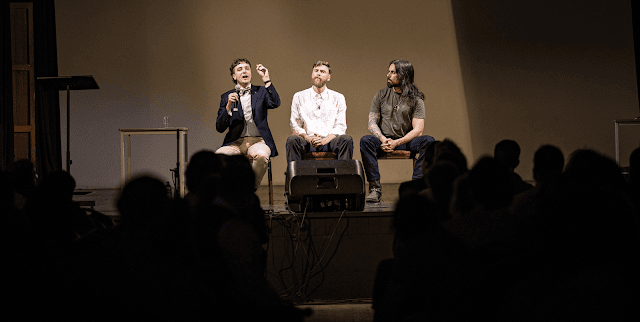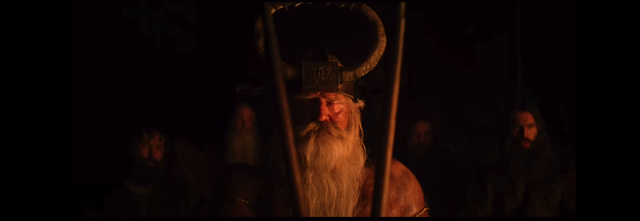"Myths are things that never happened but always are" Sallustius
“Now, the myths imitate the gods themselves in terms of what is expressible and inexpressible, unclear and clear, manifest and hidden, and they imitate the goodness of the gods. So, as the gods have made the good things stemming from perceptible things common knowledge for all, but those stemming from intelligible things only to the wise, in the same way, the myths tell everyone that there are gods, but who they are and what they are like, they tell only to those who are able to understand.” Sallustius
Myths can be interpreted in many ways; some are simply crude naturalistic or material stories which associate a god with natural phenomena. In addition to these Sallustius also describes Psychic myths which pertain to the activity of the soul and appeal to poets, and also Theological myths which do not pertain to material attributes and behaviours associated with the gods but convey aspects of the gods and divine wisdom philosophically. This last kind requires interpretation by the wise with specific reference to the nature of the gods in the context of the entire tiered cosmos. There are myths of this kind in which the gods behave in ways that are metaphysically problematic such as when a god kills, rapes or consumes another god - which naturally confuses those who attempt to interpret them literally. There are also certain myths which combine aspects of all three kinds of myth and can be understood by different kinds of people differently but must be dissected appropriately by the learned.
Here I shall offer an exercise in public myth interpretation, in the hope that the method I demonstrate not only illuminates the divine meaning of this particular myth, but that the method here shown shall serve as a model that others may use to aid them in their understanding of the gods and their pursuit of pious worship.
This particular myth, which concerns Odin and his two brothers, has quite naturally confused many for centuries, since it is only recorded by Christians who have deliberately used it to defame the immortal gods, and one would be inclined to attribute the myth itself to Christian fabrication, were it not for the fact that it is recorded in similar forms by quite chronologically and geographically remote sources.

Óðinn means “ecstatic one” and is formed with the prefix óðr which refers to the divine frenzy or ecstasy with which that god was associated. In Völuspá He and His brothers Vili (“will” as in “will power”) and Vé (“holy” or “holy space” which is cognate with with Gothic weiha 'priest' and with Old English weoh “idol” or “sacred space”) create the world through the first sacrifice of the primordial being, Ymir. This act is the foundation of all sacrifice and establishes order in the cosmos. All subsequent sacrifices recreate and participate in the same sacred moment when Ymir was slain, and from his disordered body came forth the ordered forms which constitute our world. The names of the three brothers demonstrate the prerequisites necessary for a sacrificer to perform a proper sacrifice; divine ecstasy, will and sacred space.
This must be kept in mind when addressing the myth which is the subject of this blog post. The myth itself is alluded to in three sources; First in Lokasenna, a poem which may have been composed in the 10th century, and in which Odin’s wife Frigg “beloved / wife” is accused by Loki “lock / bound” of taking both Vili and Vé as lovers. Second, in Ynglinga saga, written by Snorri Sturlusson in the 13th century, there is an allusion to Odin’s long absence during which His brothers took over His kingdom and His wife.
“Odin had two brothers, the one called Ve, the other Vilje, and they governed the kingdom when he was absent. It happened once when Odin had gone to a great distance, and had been so long away that the people of Asia (nb. Anatolia - Snorri wrongly connects the Aesir to Anatolia by way of folk etymology) doubted if he would ever return home, that his two brothers took it upon themselves to divide his estate; but both of them took his wife Frigg to themselves. Odin soon after returned home, and took his wife back.”
 |
Ollerus surfing on a bone
|
The third source, Saxo Grammaticus' Gesta Danorum, is more complicated to interpret because the Christian author reduces all the gods to mortal humans with histories in Scandinavia and the near East. Saxo tells two or three heavily distorted stories which appear to pertain to the same original myth; in one of these, a euhemerised version of the god Ullr “glory” with the Latinised name Ollerus replaced Othinus (Odin) after the latter was banished for His rape of Rinda. Ollerus is described as a cunning wizard who could travel across the seas on a bone - He ruled for ten years, but was ultimately expelled by the returning Othinus, and killed by the Danes in Sweden. A second refers to another wizard called Mithotyn (Mit-Oðinn) who wanted to be worshipped as a god, and so seized the opportunity during another of Othinus’ journeys abroad, and led the people to pay holy observances to his name. Just as in the other story, Othinus returns and the usurper flees, but this time to Finland, and is there killed by the locals. Mithotyn apparently haunted his barrow thereafter - which is likely Saxo’s way of downplaying the significance of his cult which evidently spread to Finland. Saxo does not mention Frigg’s infidelity in either of these stories but he does in a third;
“But his queen Frigga, desiring to go forth more beautified, called smiths, and had the gold stripped from the statue (of Odin). Odin hanged them, and mounted the statue upon a pedestal, which by the marvellous skill of his art he made to speak when a mortal touched it. But still Frigga preferred the splendour of her own apparel to the divine honours of her husband, and submitted herself to the embraces of one of her servants; and it was by this man’s device she broke down the image, and turned to the service of her private wantonness that gold which had been devoted to public idolatry. Little thought she of practising unchastity, that she might the easier satisfy her greed, this woman so unworthy to be the consort of a god; but what should I here add, save that such a godhead was worthy of such a wife? So great was the error that of old befooled the minds of men. Thus Odin, wounded by the double trespass of his wife, resented the outrage to his image as keenly as that to his bed; and, ruffled by these two stinging dishonours, took to an exile overflowing with noble shame, imagining so to wipe off the slur of his ignominy.”
From Saxo’s three mangled stories we can discern there was an original myth, free of Christian moralising and euhemerism, in which Odin was absent and during this time He was usurped by one or two other gods and that His wife Frigg was unfaithful during this absence. This then matches what Snorri preserved in Ynglinga saga and what we see in the earlier Lokasenna poem.
Despite what pop culture representations and ill-informed online commenters may tell you, Germanic paganism was not at all tolerant of infidelity. Tacitus described the practices of the Germanic tribes of the 1st century as follows:
“Very rare for so numerous a population is adultery, the punishment for which is prompt, and in the husband's power. Having cut off the hair of the adulteress and stripped her naked, he expels her from the house in the presence of her kinsfolk, and then flogs her through the whole village. The loss of chastity meets with no indulgence; neither beauty, youth, nor wealth will procure the culprit a husband.”
1000 years later the Vikings of Iceland were less brutal towards such women but hardly any more forgiving. Adultery resulted in either divorce or fines, or both. So we cannot conclude that the infidelity of Frigg reflected a social tolerance of polyamory, promiscuity or infidelity since none of these were remotely acceptable. Therefore this myth must belong to the category which Sallustus termed Theological and must be explained philosophically.
In light of my brief explication of the creation myth from Völuspá above, we can also understand the cuckold myth as relating to the danger of imbalance which threatens the stability of the sacrificial act whence the world and divine order proceeds. When one of the three essential prerequisites of sacrifice is absent; divine ecstasy, then the other two constituents expand beyond their natural limit, taking its place and thereby resulting in an abominable crime, here represented as cuckoldry - the defilement of the beloved - as well as the usurpation of the divine kingdom. The wise see the need for the balance of the three sacred components, but the unwise may proceed with a blót having only intent and a sacred space but none of the óðr and this lack produces an imbalance as shown in the myth.
Óðr is often translated as “frenzy” “fury” or “madness” but it can equally be translated as “ecstasy”, from the Ancient Greek ἔκστασις ekstasis, "to be or stand outside oneself” and this more properly reflects the state of being one must first achieve prior to communion with the gods. As a noun the word can also mean "mind, feeling" and also "song, poetry" - the former pertaining in this context to the mindset or feeling proper to ritual space and time, and the latter pertaining to the sacred galdra “chants, songs” which Odin himself created, since he is called ein skǫpuðr galdra “the sole creator of galdra”.
There also remains the question as to the Identity of Odin’s brothers in other myths. Separate from the creation of the world, we also find in Völuspá a story of Odin and his two brothers who created mankind but here his brothers are named Lóðurr and Hoenir.
“17. Until there came three from that company, powerful and pleasant Æsir to a house. They found on land, lacking vigour, Ash and Embla, free of fate.
18. Breath they had not, energy they held not, no warmth, nor motion, nor healthy looks; breath (Önd can mean breath or spirit) gave Odin, energy (óð can mean energy but refers to a natural force present throughout nature) gave Hoenir, warmth gave Lódur, and healthy looks (the gifts of Lóðurr can also be translated as blood/flesh and good colour/hue/complexion).”
Völuspá - Andy Orchard translation
Whether Lóðurr and Hoenir are identical to Vili and Vé is the subject of much scholarly debate but I will not cover that here, suffice to say that this is a possible interpretation. There is also a possibility, suggested by Hilda Ellis Davidson, that the three manifestations of Odin encountered by Gylfi in the Prose Edda and named
Hárr “High”,
Jafnhárr “Just-as-High”, and
Þriði “Third”, can be identified as Odin, Vili and Vé. Each of these theories has merit, but even if they are incorrect, it does not affect my interpretation of the cuckolded Odin myth.





















